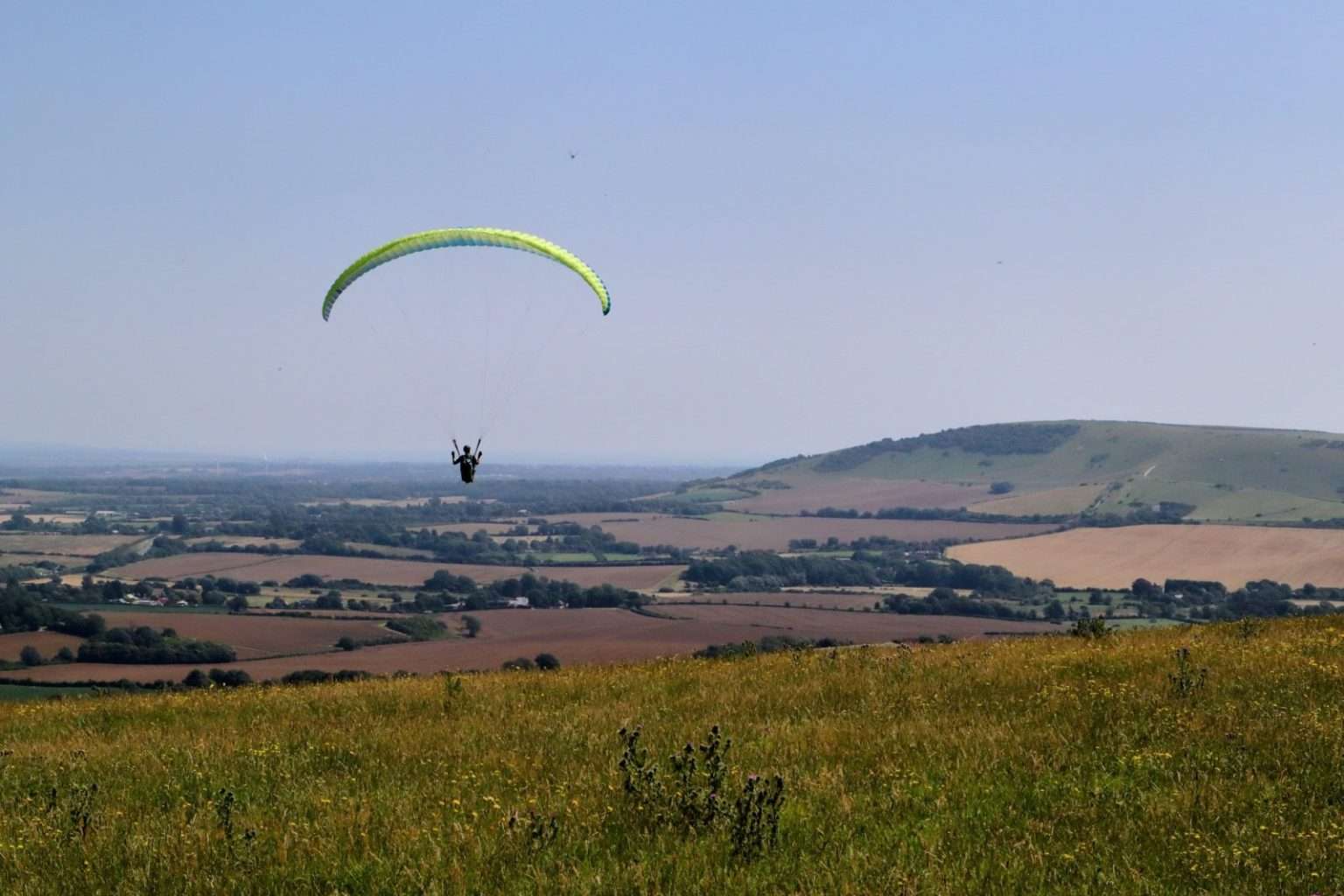We were up and out walking by 7:30 on day seven, our penultimate day on the South Downs Way. The sun was still low and there was steady breeze blowing, so for the first time on the trip I was a bit chilly.
Lizzy had arranged for us to stay the night with family again, so from the outset we had a fixed destination and target time in mind – a 2pm pickup in the medieval village of Alfriston, just over 23 km away.
The first hour involved a long, steady climb round the right hand shoulder of a large horse-shoe shaped hill.
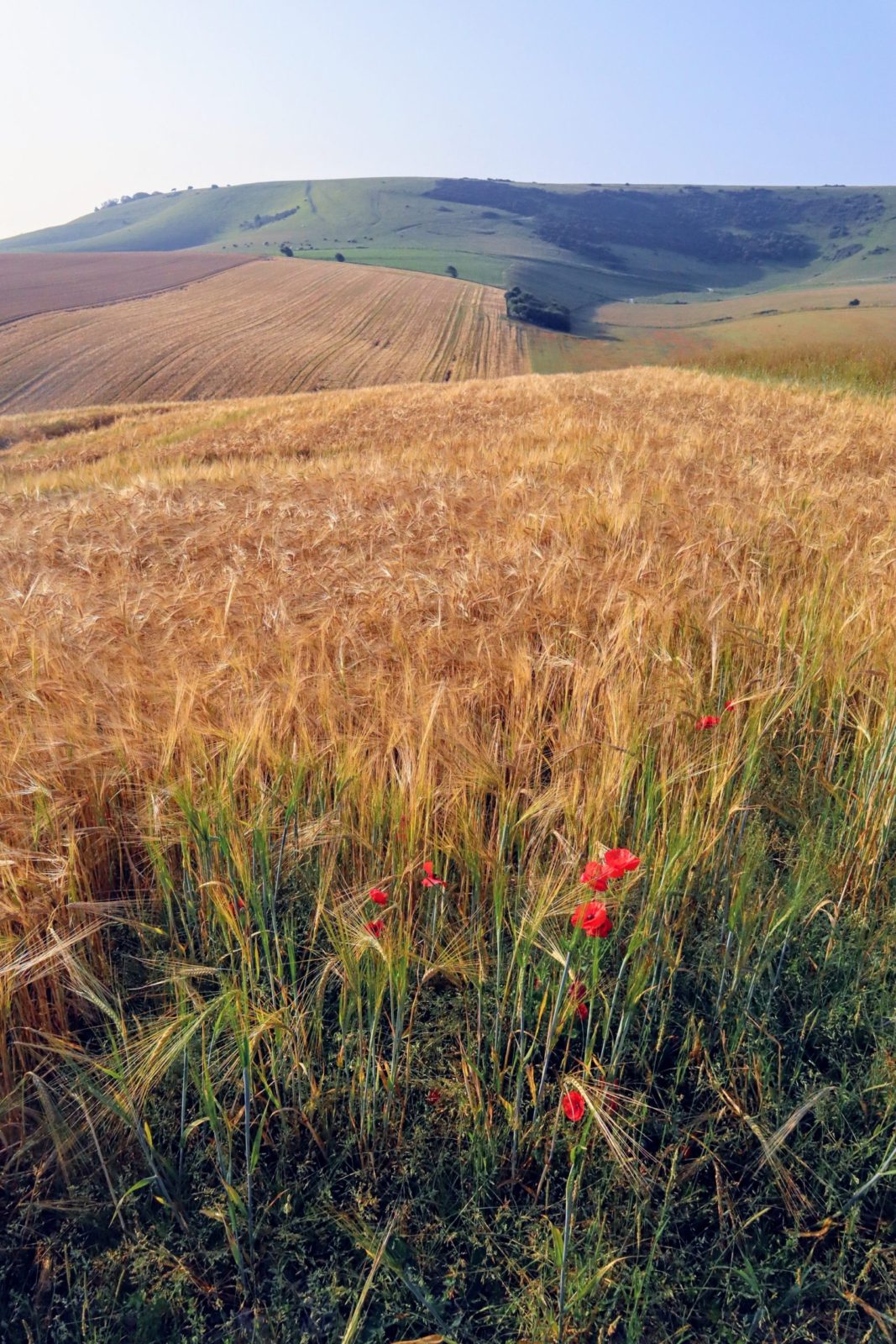
As we approached the crest of the hill the path swung round to the left, until we were effectively walking on the opposite bearing to that in which we started. While this wasn’t great from a crow-flies perspective, it did offer us a great view back on the shoulder we just ascended, as well as the winding valley floor below.
The path soon corrected itself and began heading eastwards once more. To the north we could see down across the valley, and now the morning haze had lifted we could see all the way to the town of Lewes, well known throughout the South East for its risqué bonfire night processions.

From here the path traversed the hill in a south-easterly direction, running through open meadows and grazing land, until it began the steady descent down to the River Ouse in the Valley below. The fine weather and spectacular vista offered a perfect opportunity for photography and I was trigger happy with my camera all the way along the ridgeline.

Eventually the path dropped to the valley floor and we passed through the quaint little hamlet of Southease. In the center stood the Church of St Peter, overlooking the small village green.
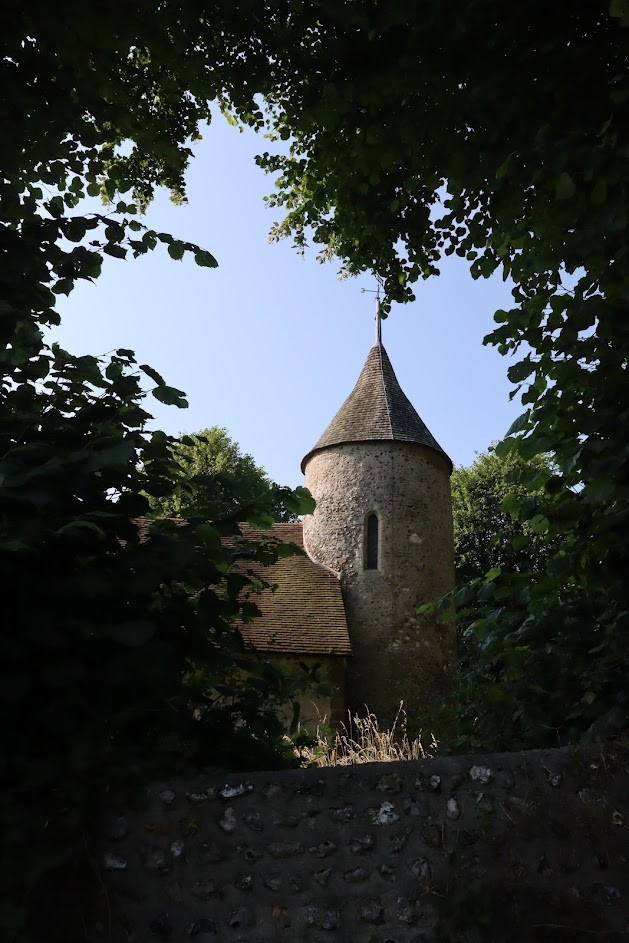
It was such a tranquil location that we decided to stop for brief rest and to have a snack bar on a bench that was helpfully sat by the green.
Unfortunately, within moments of us sitting down on the bench an army of wasps ambushed us and harassed us until we had no choice but make a hasty retreat.
We shuffled our way along and over the bridge spanning the River Ouse. I stopped once more to take photos but Lizzy marched on, unimpressed by my photography and the impact it was having on our tight schedule.
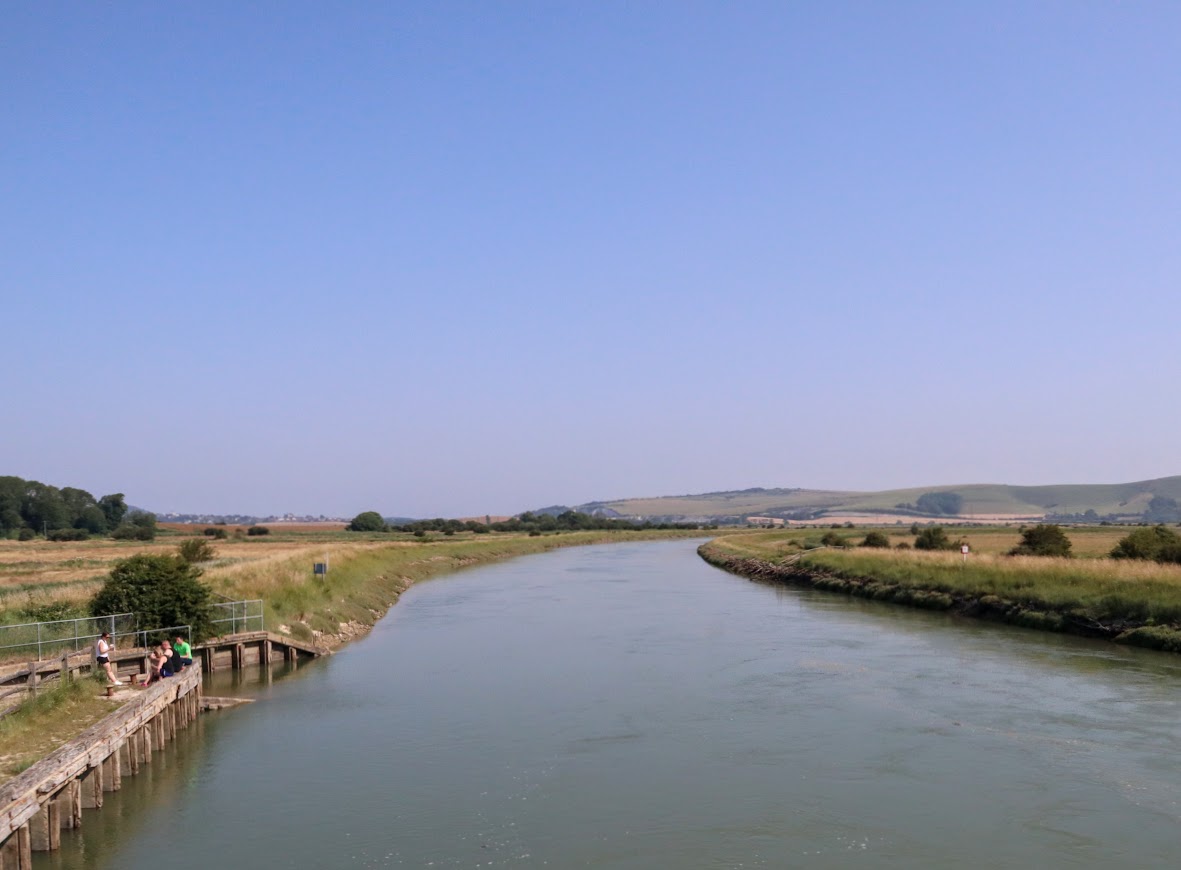
A few hundred metres along the trail passed the second railway station that intersects the South Downs Way – Southease Station. Few long distance trails offer this level of convenience when it comes to transportation.
We crossed the train line, took the path over the bridge over the A26 and then began the climb back up onto the Downs. Whilst most of the previous days offered us excellent views north of the Downs this section instead began to open up the south. As we climb higher the port of Newhaven came into view, located on the mouth of the Ouse.
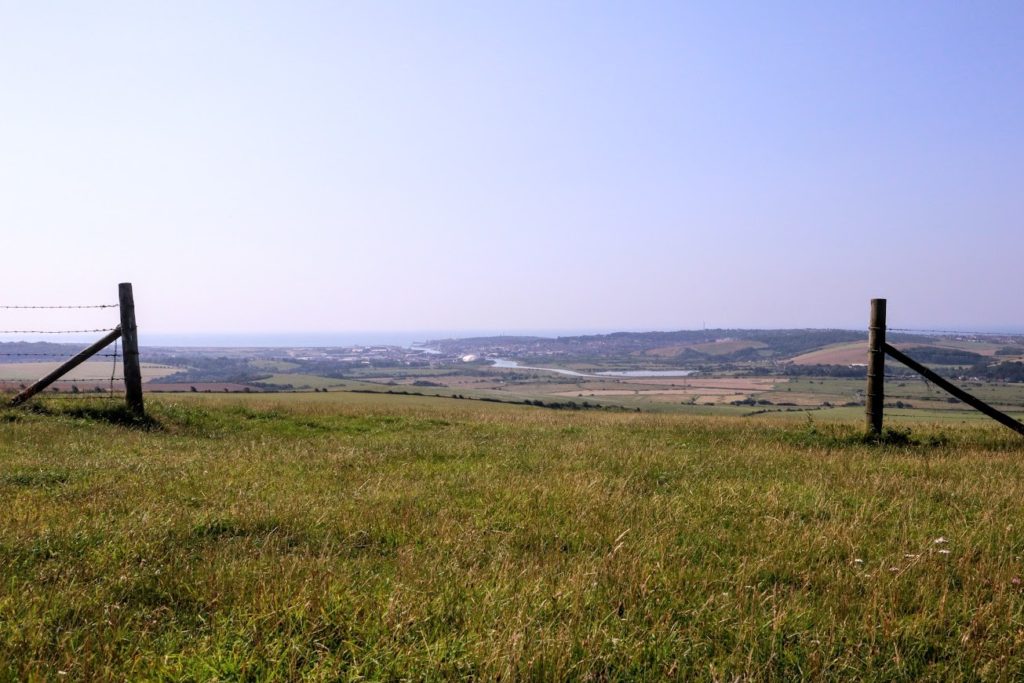
We continued for another hour or so eastwards towards Firle Beacon and as we approached we spotted a number of paragliders launching from the top of the hill.
They were taking advantage of the thermals created by the strong northern breeze to launch themselves into the air above the downs.
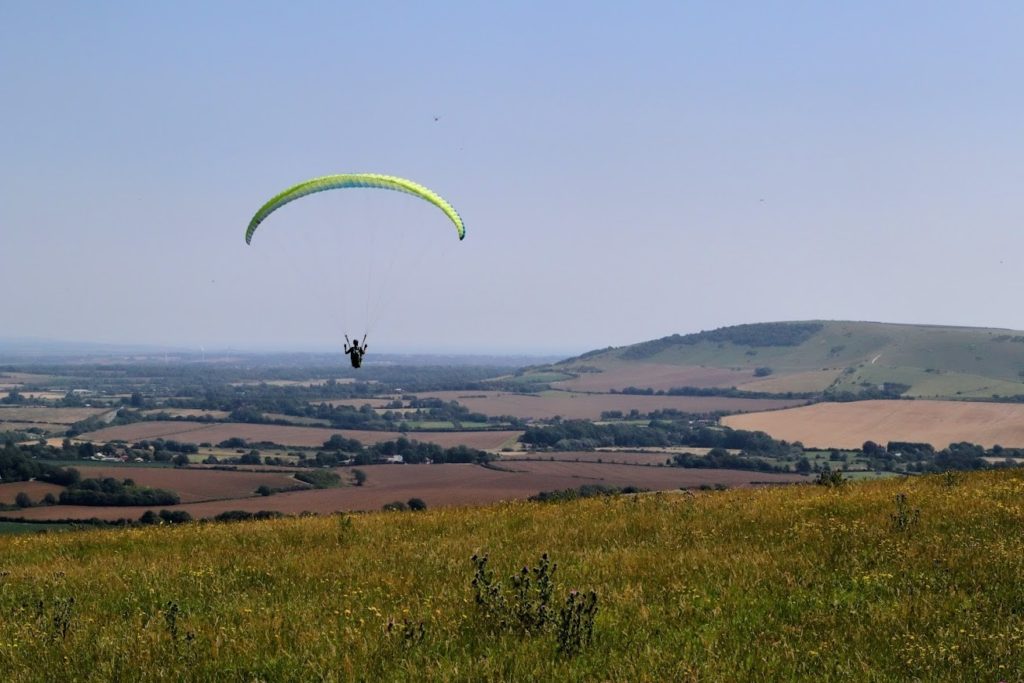
I was terribly excited by the photography opportunities and instantly began taking stills and videos. Lizzy however was less than impressed and carried on alone.
After 5 minutes I looked up and realised that she was still going and was now almost at the brow of the next raise. I figured that losing wasn’t the best idea, given that she had the map, so I jogged after her to try and catch up.
20 minutes later and I finally caught up with her half way down the other side of the hill. She seemed mildly glad to see me and I took this as a positive sign.
We carried on the last 4 km down to Alfriston, a small village with Neolithic origins, that is host to a number of well preserved medieval houses. The village is also home of the very first building that the National Trust bought and is the place where Eleonor Farjeon wrote the classic hymn ‘Morning has broken’.
Soon our transport arrived, picking us up from the idyllic village green and we were once again whisked off to a stay in a proper bed!

Leg Information
- Distance Travelled: 22km
- Height Climbed: 519m
- Accommodation: We stayed with family but there is Accommodation in Alfriston camping at Alfriston Camping Park nearby
